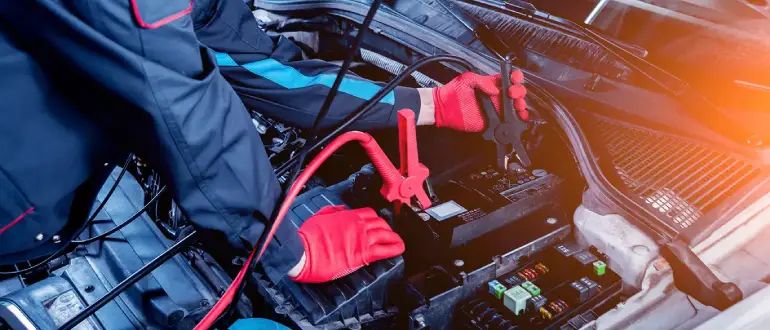3 Easy Ways to Test Car Alternator at Home (DIY Guide for Beginners)

How to Test Car Alternator at Home: A Complete Step-by-Step Guide
When your car starts to experience electrical issues, it could be the alternator causing the problem. Learning how to test car alternator at home is a simple yet effective way to avoid costly visits to the mechanic. By using basic tools like a multimeter, you can quickly determine if your alternator is functioning properly. In this guide, we will walk you through the steps to test car alternator at home, ensuring you can fix minor problems on your own.
Why Testing Your Car Alternator at Home is Important
The alternator plays a crucial role in your car’s electrical system. It charges the battery while the engine is running and powers various electrical components. If the alternator malfunctions, your car's battery can quickly deplete, causing further electrical problems. Knowing how to test car alternator at home can help you identify a problem early, preventing larger, more costly repairs down the road.
🔋 Step 1: Testing the Car Battery First
Before you dive into testing the alternator, it’s essential to check the battery. A dead or weak battery can mimic alternator problems, so it's wise to rule it out first.
What You'll Need to Test Car Alternator at Home:
- Multimeter
- Gloves
- Access to battery terminals
How to Test the Car Battery
- Set the multimeter to DC voltage (20V range).
- Connect the red probe to the positive terminal (+) and the black probe to the negative terminal (-) of the battery.
- A healthy battery should read around 12.6 volts. If it’s lower than 12.4 volts, the battery may need recharging or replacing.
Once the battery is tested, move on to checking the alternator to ensure that it's working correctly.
⚡ Step 2: How to Test the Car Alternator at Home
The alternator charges the battery when the engine is running, which is essential for keeping your car’s electrical systems powered. If the alternator is malfunctioning, it can lead to a drained battery and unreliable vehicle operation. Learning how to test car alternator at home can save you time and money in diagnosing the issue before replacing parts unnecessarily.
Step-by-Step Process for Testing the Alternator:
- Start the engine and let it idle.
- Use the multimeter to measure the voltage at the battery terminals.
- A healthy alternator should produce 13.8V to 14.8V. Anything lower than this could indicate a problem with the alternator.
- If the voltage is higher than 15V, your alternator might be overcharging, which can lead to further electrical issues.
Remember, the alternator's voltage output can fluctuate based on the load, such as the use of lights or air conditioning. Be sure to test it under different conditions for a more accurate reading.
🔧 Step 3: Testing the Starter Motor
If your alternator seems to be functioning properly but you're still having trouble starting the car, it may be an issue with the starter motor. The starter motor is responsible for cranking the engine when you turn the key or press the start button.
How to Test Your Starter Motor
- Ensure the battery is fully charged.
- Measure the voltage drop while trying to start the car using the multimeter in the “start” position.
- The voltage should not drop below 9.6V when cranking. If it does, the starter motor may need replacement.
🧰 Troubleshooting Tips
If you’ve followed the steps above and are still having trouble, here are a few troubleshooting tips to help you test car alternator at home more effectively:
- Check that the battery terminals are clean and free from corrosion. Dirty terminals can cause inaccurate voltage readings.
- Make sure the fuses related to the alternator and electrical system are intact and functioning properly.
- Consider testing the alternator diodes, which regulate current flow and prevent overcharging.
🛠️ When to Seek Professional Help After Testing Car Alternator at Home
If your alternator is still not performing as expected after testing, it may be time to consult a professional mechanic. Look for these signs that indicate your alternator might need repair or replacement:
- Erratic voltage readings during testing
- Strange noises or burning smells coming from the alternator
- Electrical system failure in the vehicle, such as dimming lights or an unresponsive dashboard
📌 Recap: Quick Checklist for Testing Car Alternator at Home
- Battery voltage: 12.6V (healthy) — check before moving to the alternator test.
- Alternator output: 13.8V to 14.8V (healthy alternator).
- Starter motor voltage: ≥9.6V while cranking (healthy starter).
By learning how to test car alternator at home, you can keep your vehicle’s electrical system in check, avoid unnecessary repairs, and potentially save hundreds of dollars. Regular testing ensures that you are aware of potential issues before they turn into larger problems.
If you're tackling more advanced repairs or need diagnostic tools for specialized vehicles, check out the John Deere EDL V3 Diagnostic Tool for high-quality, precise diagnostics.

I am really loving the theme/design of your site. Do you ever run into any web browser compatibility issues?
A few of my blog visitors have complained about my site not working correctly in Explorer but looks great in Chrome.
Do you have any ideas to help fix this problem?